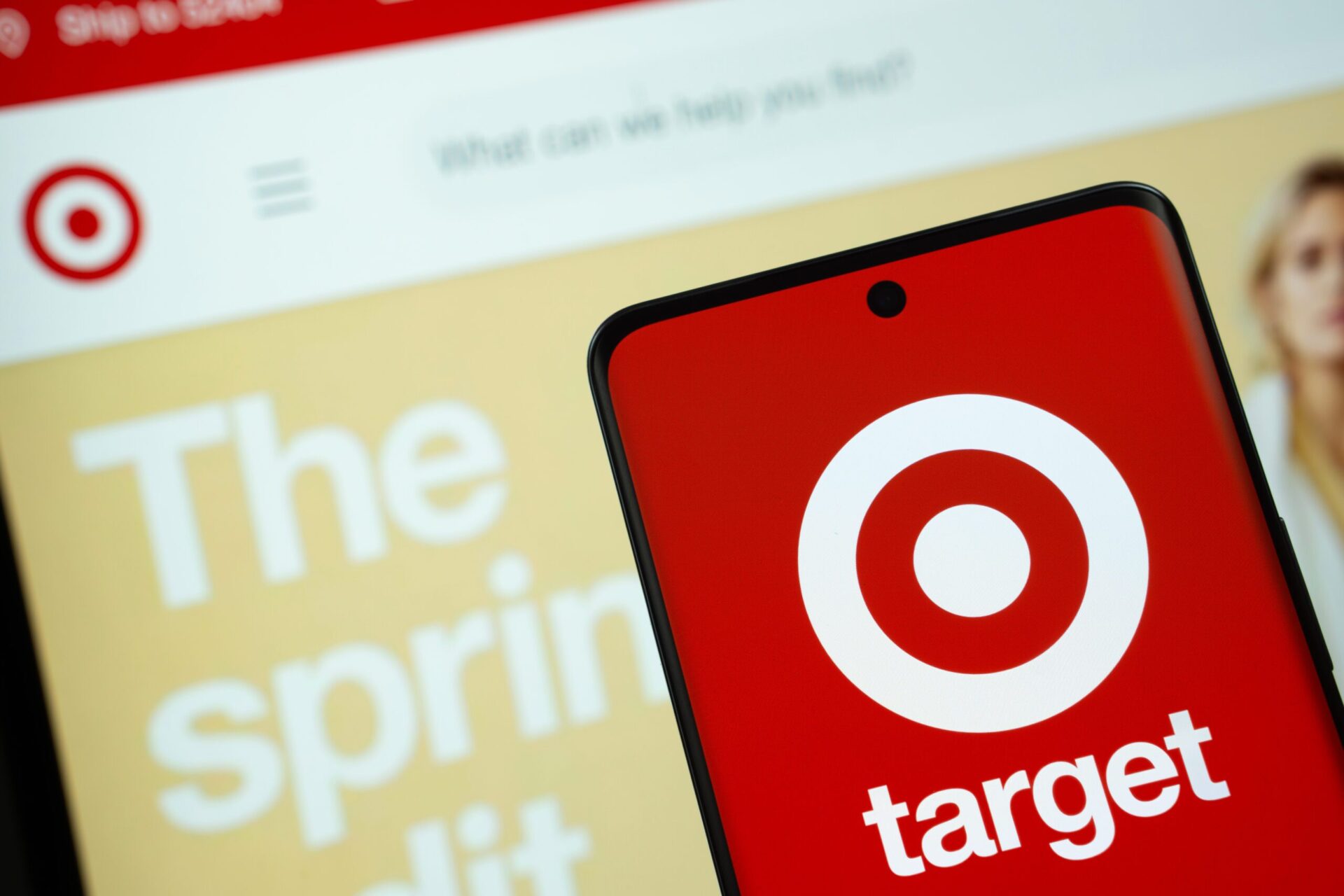As they did in Q1, Target online sales grew as total sales decreased in the retailer’s fiscal Q2, which ended Aug. 2.
Target net sales were nearly flat year over year in its fiscal Q2, decreasing 0.9% to $25.2 billion. Compared to its fiscal Q1, Target net sales increased 5.9% in Q2. Similarly, the year-over-year decrease in Q2 improved compared to that in Q1.
Target said all six of its core merchandising categories’ comparable sales improved in Q2 compared with Q1. Additionally, non-merchandise sales grew in 14.2% year over year, with Roundel, membership and marketplace revenues all growing double-digits, Target said.
Roundel refers to Target’s retail media network. In July, Target added a new artificial intelligence (AI) feature as part of its efforts to grow its advertising business. Its new tool, called Precision Plus, helps advertisers optimize offsite campaigns using Target’s first-party data, according to a company blog post.
Target is No. 5 in the Top 2000 Database. The database is Digital Commerce 360’s ranking of North America’s online retailers by web sales.
Target is also No. 64 in the Global Online Marketplaces Database, which ranks the 100 largest global marketplaces by third-party gross merchandise value (GMV). In both databases, Digital Commerce 360 categorizes Target as a Mass Merchant.
CEO change at Target
On Target’s Q2 earnings call with investors, CEO Brian Cornell announced that the retailer’s board of directors has unanimously elected current chief operating officer Michael Fiddelke to become its next CEO. Fiddelke will also join the board at the start of Target’s fiscal 2026.
Cornell added that as Target results have fallen short of expectations over the last few years, Fiddelke has engaged the executive leadership team to refocus its strategy. Fiddelke will continue his work leading the Enterprise Acceleration Office that Target launched in Q1.
“I want to stress that this is a longer-term effort that’s focused on finding new and sustainable ways of working that can serve us for years to come,” Cornell said. “And the way our team has worked together this year to navigate through a volatile and uncertain tariff environment provides a vivid example of how our team can perform when we remove barriers and coordinate our efforts across the business.”
How Target is addressing tariffs after Q2
“As one of the largest importers in the country, the prospect of higher tariffs meant we were facing some major financial and operational hurdles as we entered the year,” Cornell said. “This was further complicated by the multiple changes in tariff policy that have been announced and implemented as the year has progressed.”
These challenges have required close coordination among Target’s merchandising, supply chain, stores and finance teams, Cornell added. Those teams have developed and implemented “countless” revisions to product and inventory plans, he said. Those plans involve:
- Assortment
- Product development
- Sourcing
- Receipt timing
- Supply chain flow
- Order quantities
- Pricing
“While the tariff environment remains challenging and highly uncertain, the team has made significant progress in mitigating their impact,” Cornell said.
At the same time, it has limited tariffs’ impact on Target pricing. He said that although Target expects short-term pressure from tariffs to affect this year’s earnings, the company expects “to end the year in a healthy position and move beyond this period of uncertainty in 2026.”
Chief financial officer James Lee said Target is employing several strategies, including diversifying the countries where it handles production and evolving its assortment. He said a good example of that is Bullseye’s Playground, for which Target has committed to price points of $1, $3 and $5.
“Of course, we’re continuing to negotiate with our partners to ensure that we’re offering everyday good value to the consumer,” Lee said. “What we’ve said and it continues to be our position is that we’ll take price as a last resort.”
Target online sales Q2
In Q2, Target online sales increased 4.3%. That reflects more than 25% growth in same-day delivery through Target Circle 360 and continued growth in Drive Up, the retailer said.
Drive Up refers to Target’s curbside pickup option.
The 4.3% growth in Target online sales in Q2 is slightly slower than in Q1, when they increased 4.7% year over year. In Q1, same-day delivery and Drive Up had increased more than 35% year over year, Target said.
Target ecommerce sales by year
“Beyond the assortment we sell is how we sell it, through an elevated and joyful shopping experience, both in stores and online that powers love for the Target brand all day, every day,” Fiddelke said.
Richard Gomez, chief commercial officer, said Target sales trends were “strongest in the digital channel.”
He cited that trading car sales at Target have grown nearly 70% year to date in 2025, “driving hundreds of millions of dollars of incremental sales.” That makes Target a top market share player in the category, he said. It puts trading cards on track to drive more than $1 billion in sales this year, he said.
Lee said Target will continue to leverage stores as fulfillment hubs.
“It’s an incredibly fast, efficient and capital-light approach to running an omnichannel business,” Lee said. “And to ensure our store teams can deliver an outstanding in-store shopping and digital experience, we’re investing in technology and process improvements to further streamline the fulfillment process.”
Check back for more earnings reports. Click here to read last quarter’s article on Target earnings and online sales.
Do you rank in our databases?
Submit your data and we’ll see where you fit in our next ranking update.
Sign up
Stay on top of the latest developments in the online retail industry. Sign up for a complimentary subscription to Digital Commerce 360 Retail News. Follow us on LinkedIn, X (formerly Twitter), Facebook and YouTube. Be the first to know when Digital Commerce 360 publishes news content.







